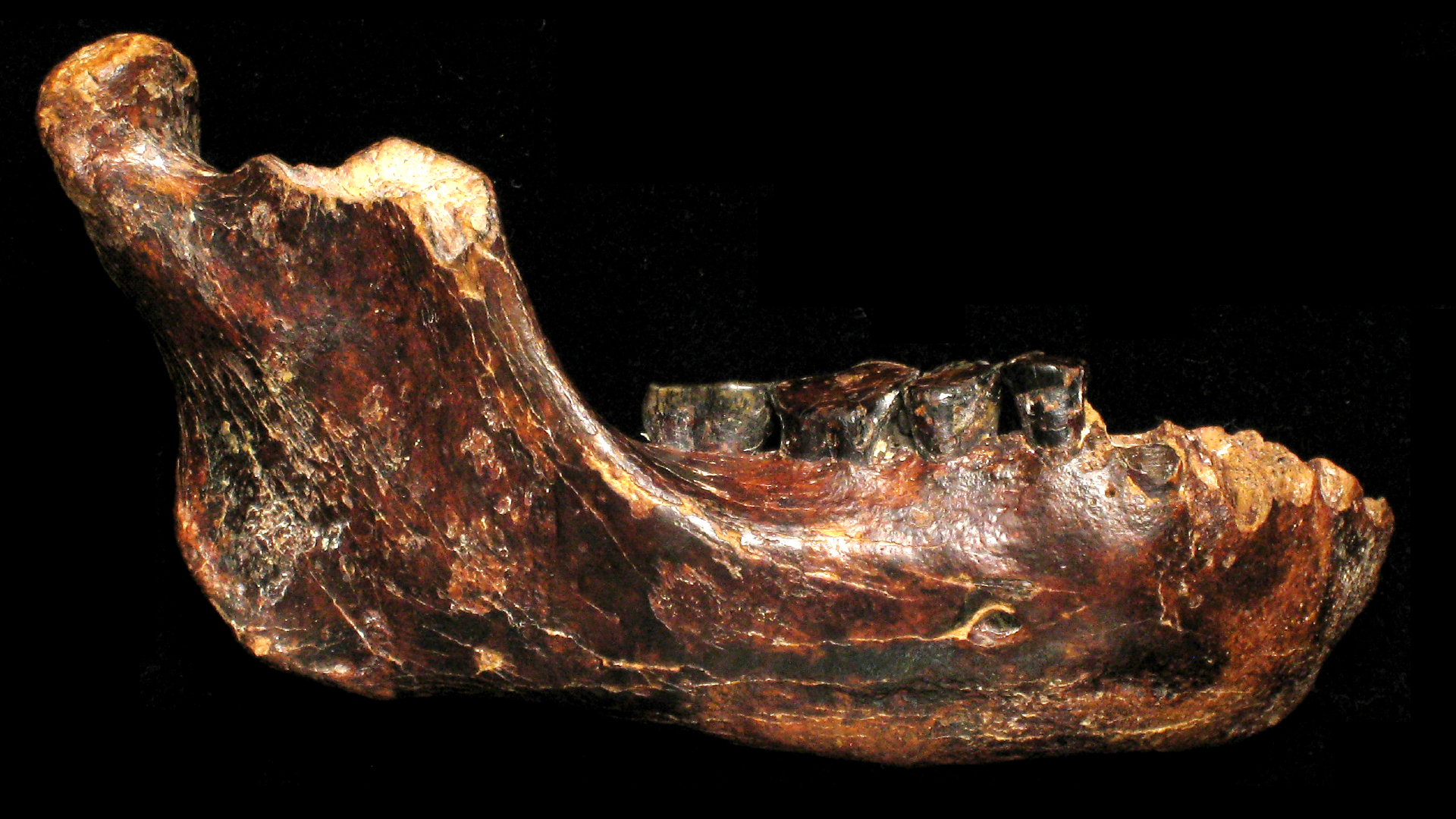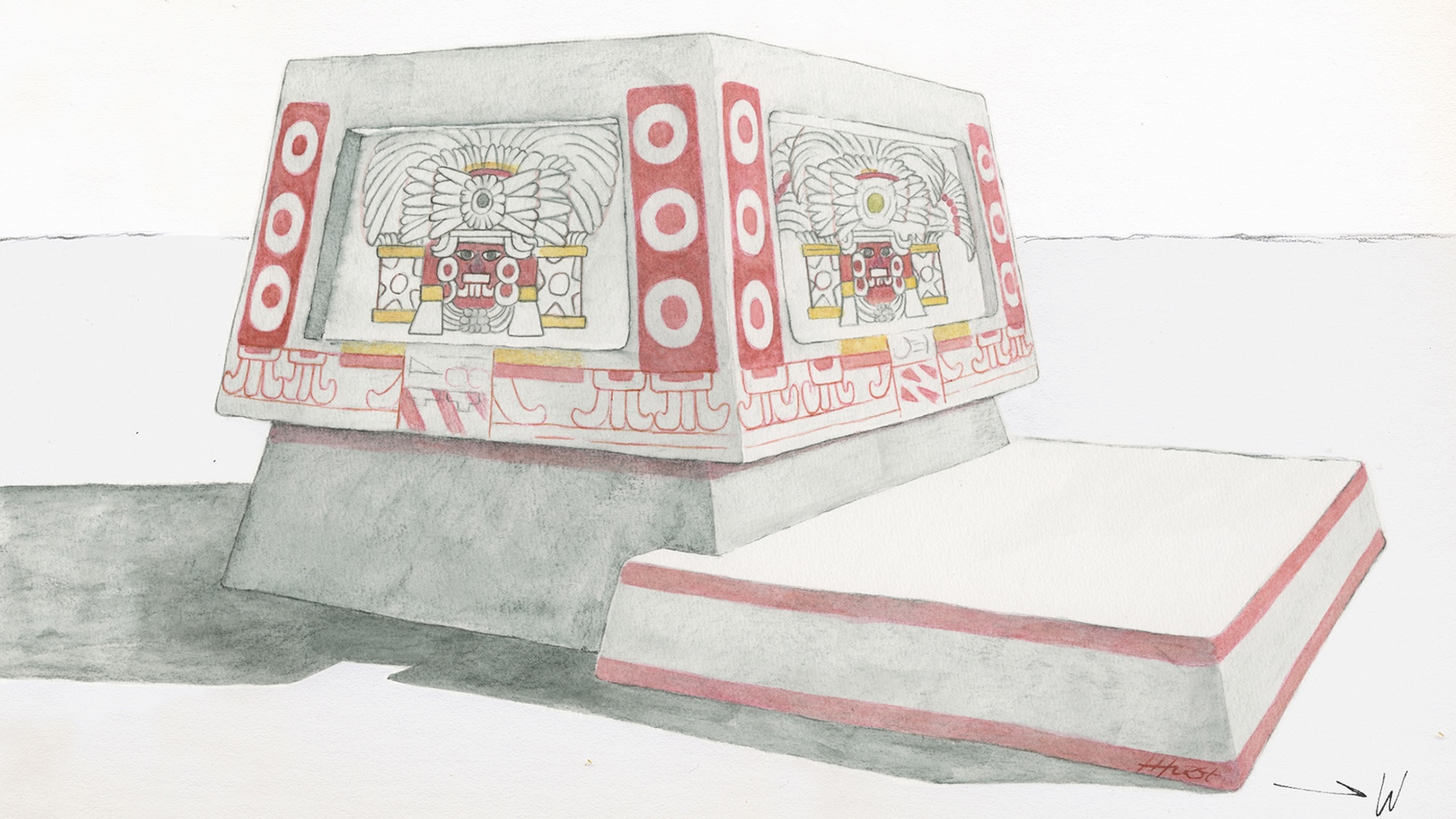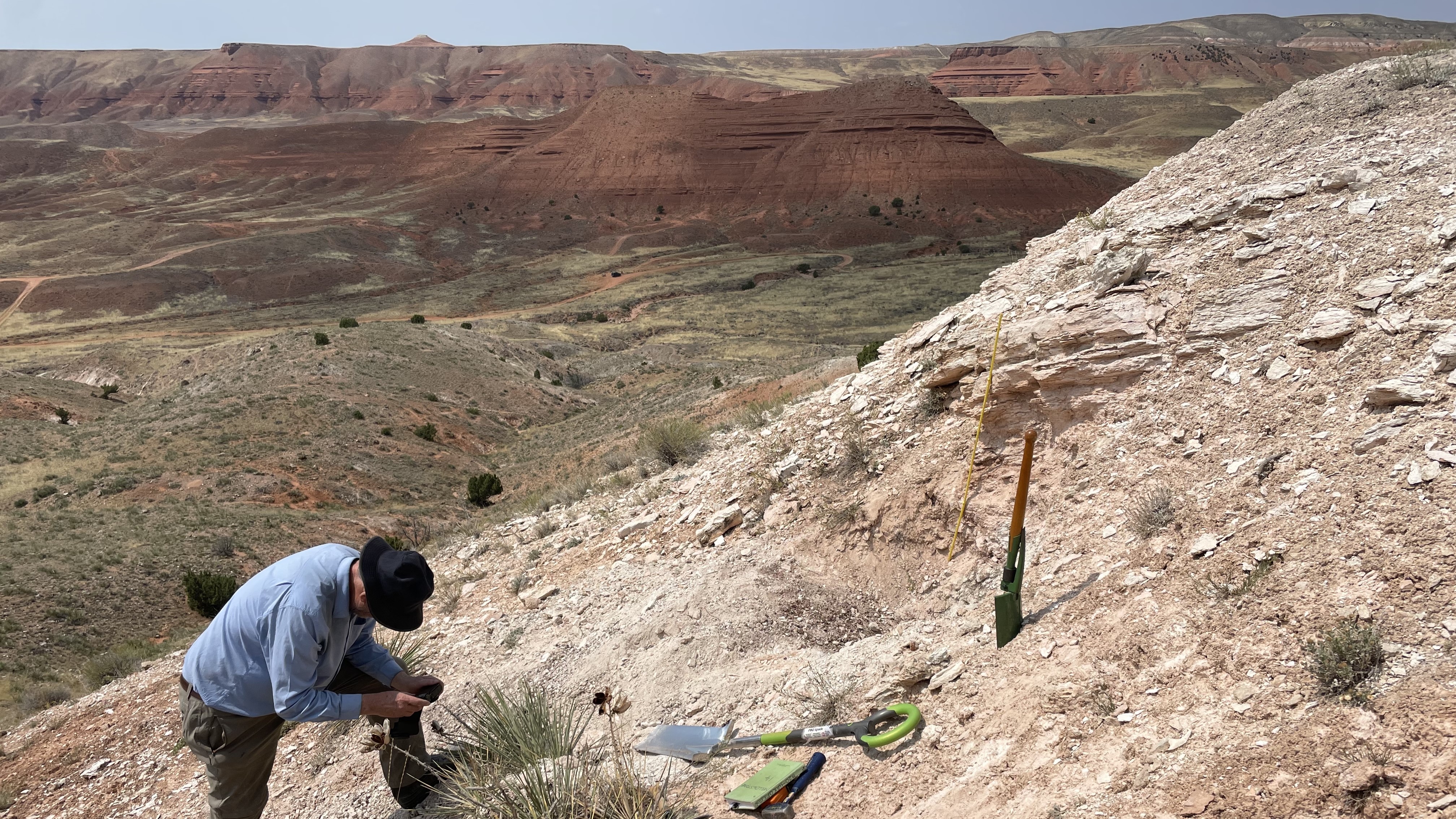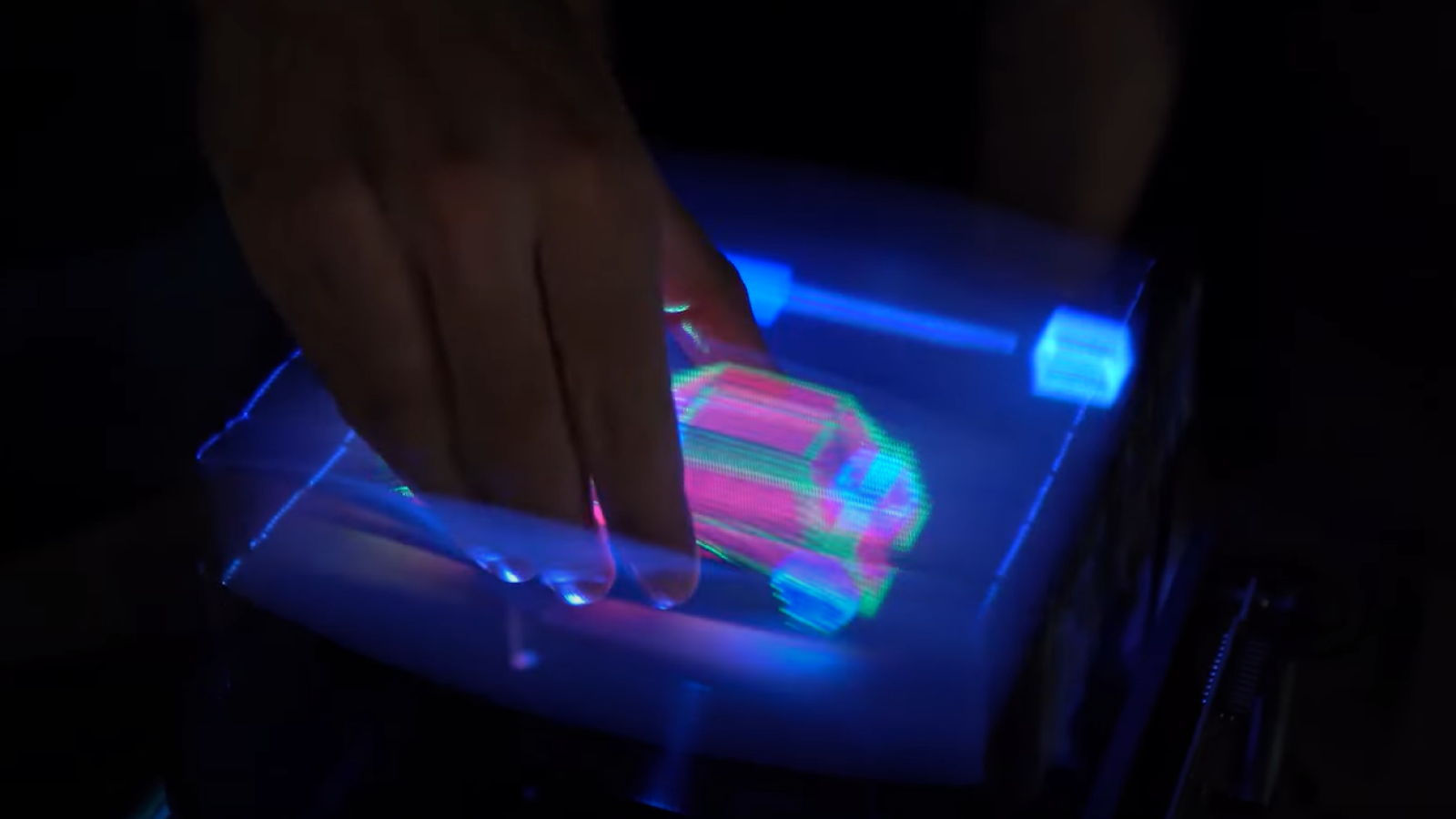'Fascinating' Viking Age inscription reveals who owned immensely valuable 'Galloway Hoard'
A newly deciphered inscription suggests the immense "Galloway Hoard" found in Scotland over a decade ago was held in common.
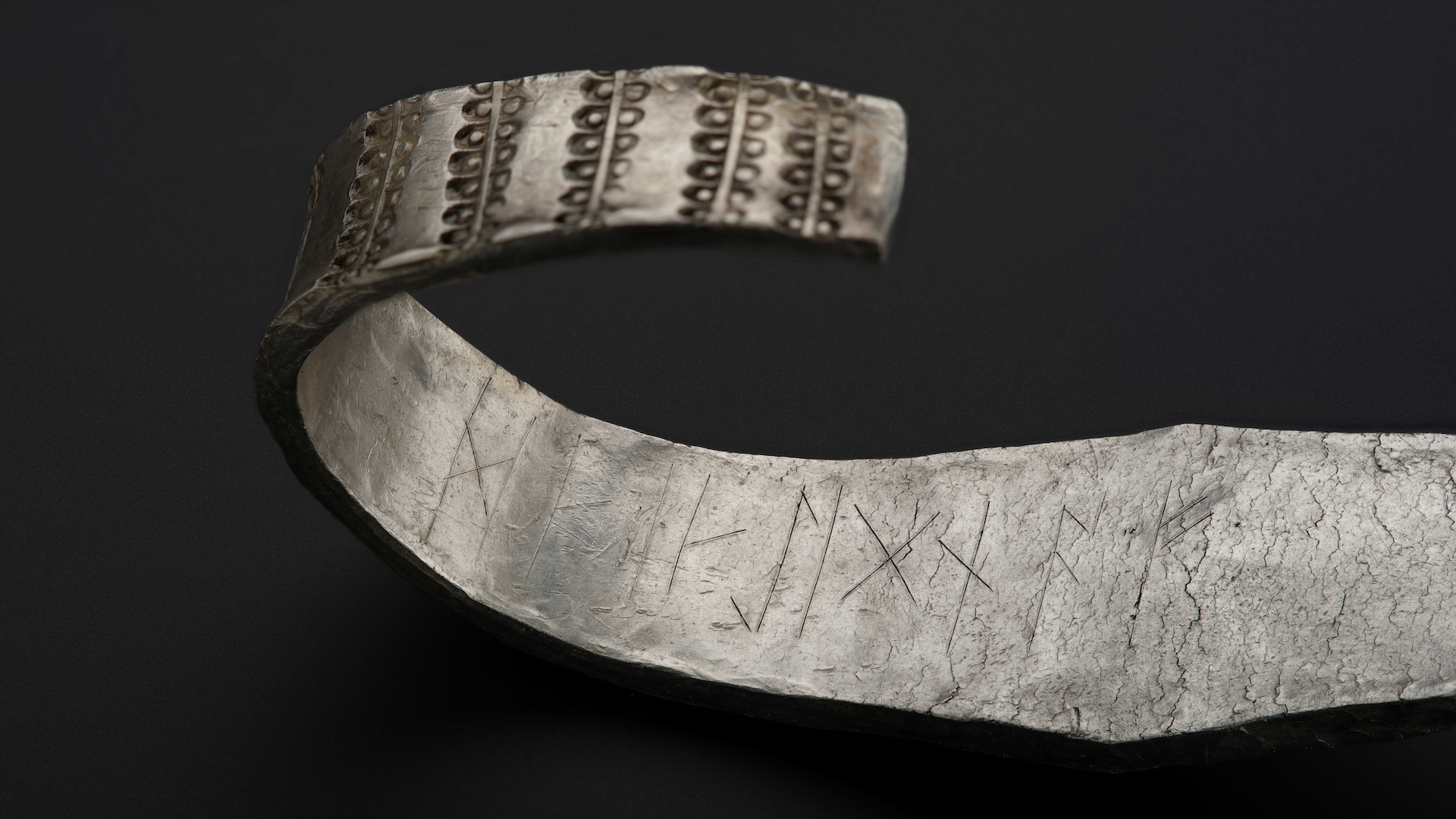
Newly deciphered Viking Age runes carved inside a 1,100-year-old silver arm ring from Scotland suggest that the ornament and the hoard it was buried with were owned by a community, rather than by an individual.
The discovery provides important insight into the immensely valuable "Galloway Hoard" that contains the arm ring, experts said.
Researchers identified the language of the runic inscription as a type of Old English (a form of the ancient Germanic language). The proposed translation reads, "This is the community's wealth," although the translators noted that the word "wealth" could also be interpreted as "property."
They said the inscription implies that the entire Galloway Hoard, which contains more than 11 pounds (5 kilograms) of silver and gold, was held in common by an early medieval community.
"The idea that the wealth this hoard represents would be communally held is fascinating," Martin Goldberg, an archaeologist with National Museums Scotland involved in recent research into the hoard, said in a statement. But "it does still leave us with unanswered questions around the circumstances in which a community's wealth would come to be buried, and also which particular community."
Related: Massive medieval coin hoard worth 'about 150 sheep' discovered in Germany's Black Forest
Medieval treasure
Metal detectorists found the Galloway Hoard in 2014 near the village of Balmaghie in the Galloway region of southwest Scotland — hence its name.
Sign up for the Live Science daily newsletter now
Get the world’s most fascinating discoveries delivered straight to your inbox.
Experts have determined that the hoard dates to about the year 900 and that it seems to have been buried in four distinct parcels, according to National Museums Scotland, which acquired the hoard in 2017.
The top layer of the buried hoard contained silver bullion and a rare Anglo-Saxon silver crucifix, and four silver arm rings were buried beneath it. Below that was a wooden box containing pieces of gold, and beneath that was a trove of carefully wrapped relics, beads, pendants, brooches and bracelets.
Experts think the careful burial helped preserve several rare organic artifacts, including pieces of silk and other textiles that had been used to wrap some of the items. And they also determined that some of the objects originated from far away, including a silver gilt vessel made with metal that seems to have come from a mine in Iran, possibly when it was part of the Sasanian Empire (A.D. 224 to 651).
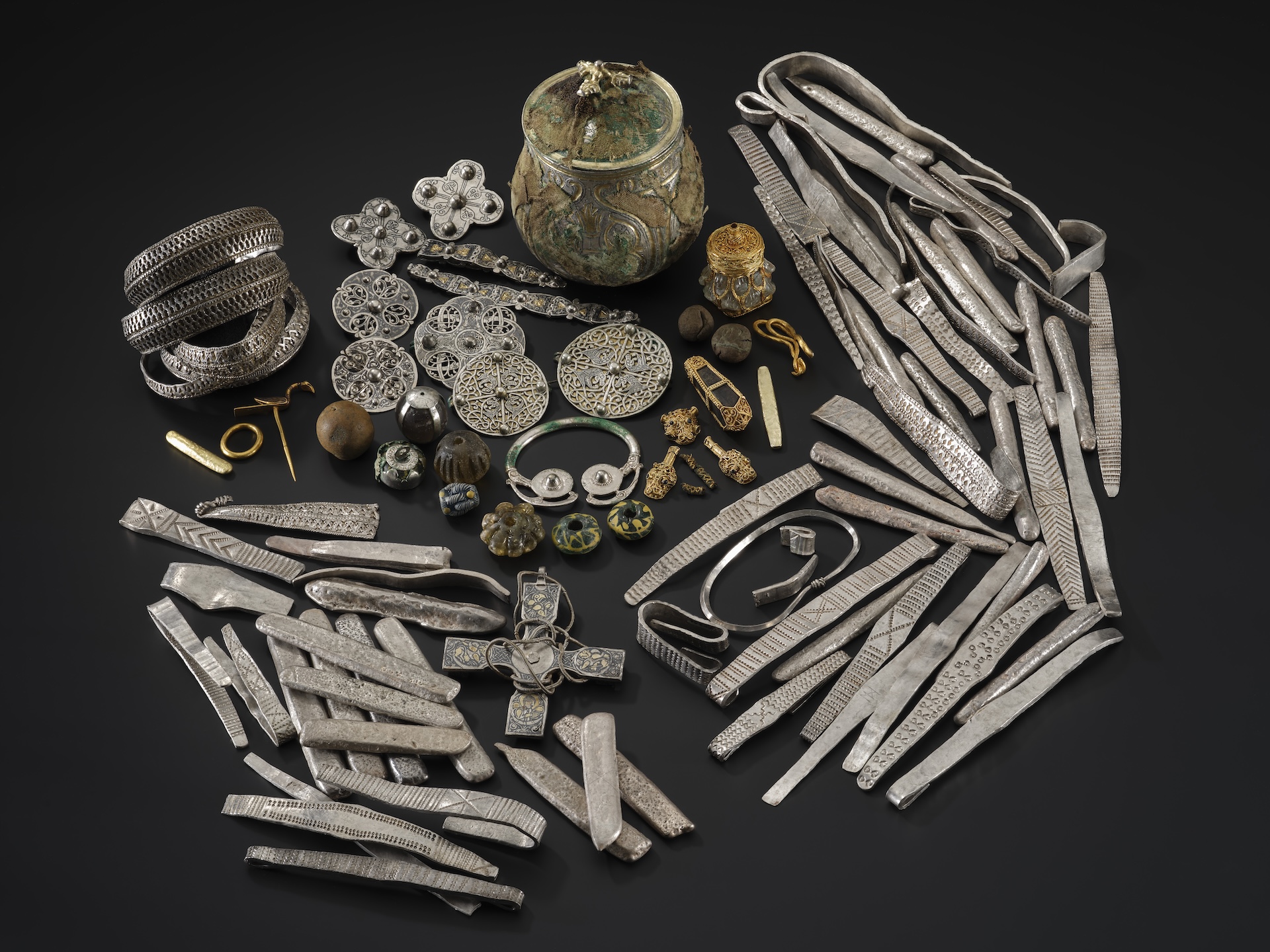
The Galloway Hoard was found by metal detectorists in 2014. It comprises more than 11 pounds (5 kilograms) of mostly silver and gold artifacts.
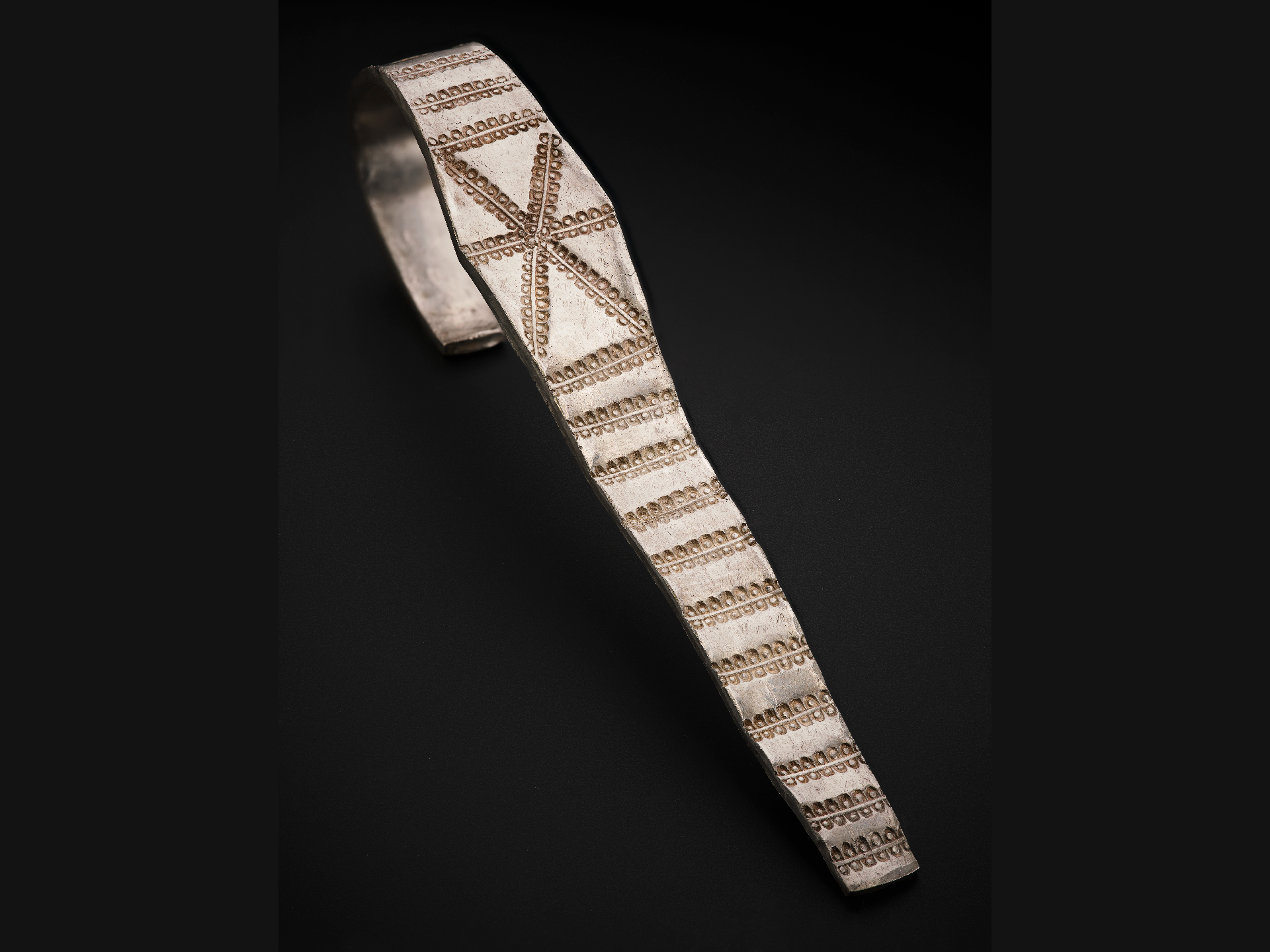
The translated inscription is on the inside of one of four silver arm rings discovered in the Galloway Hoard.
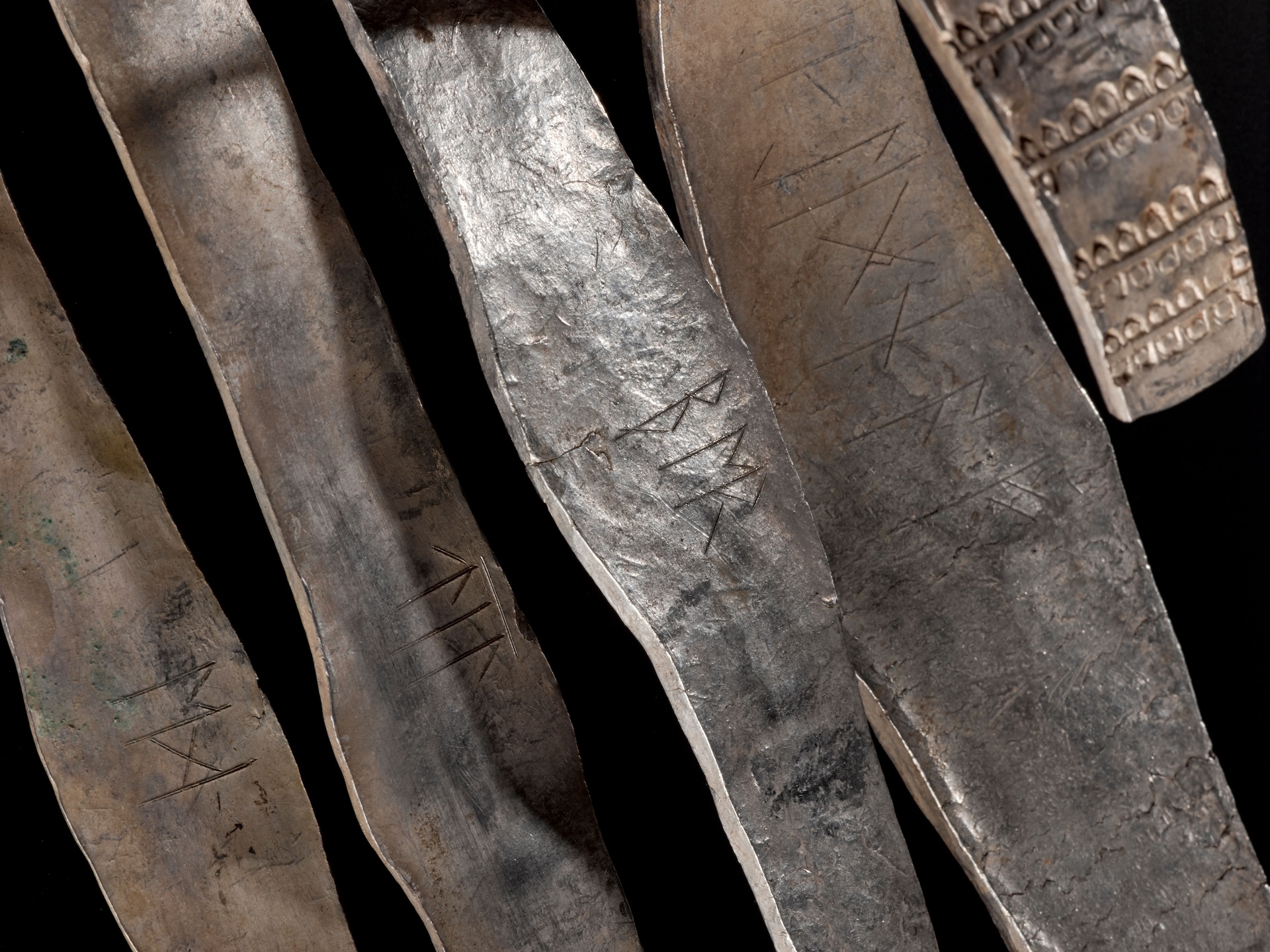
Each of the silver arm rings in the Galloway Hoard bears an inscription in runes, but these have been undeciphered until now.
Viking Age silver
Many of the objects in the hoard have religious connections, including the silver crucifix, which was probably a bishop's "pectoral cross." The cross, along with the name "Bishop Hyguald" inscribed on a gilded rock crystal jar, suggests the hoard may have been owned by a religious community, Goldberg said. These findings support a theory that Christian clergy buried the hoard to dupe the Vikings.
Each of the four silver arm rings had runic inscriptions cut into their inside faces, but their meanings had confounded experts until now, the statement said.
David Parsons, a runologist at the University of Wales who studied the inscriptions, said the runic spelling used for some words seemed not to correspond to any known languages in use in early-medieval Britain or Ireland.
"However, if we think about both spoken and written English today, there are a huge range of original and idiomatic variations," he said in the statement — and so the translation of the inscription on the silver arm ring seems to have affirmed that the object had been owned in common by a community.
Tom Metcalfe is a freelance journalist and regular Live Science contributor who is based in London in the United Kingdom. Tom writes mainly about science, space, archaeology, the Earth and the oceans. He has also written for the BBC, NBC News, National Geographic, Scientific American, Air & Space, and many others.
You must confirm your public display name before commenting
Please logout and then login again, you will then be prompted to enter your display name.

